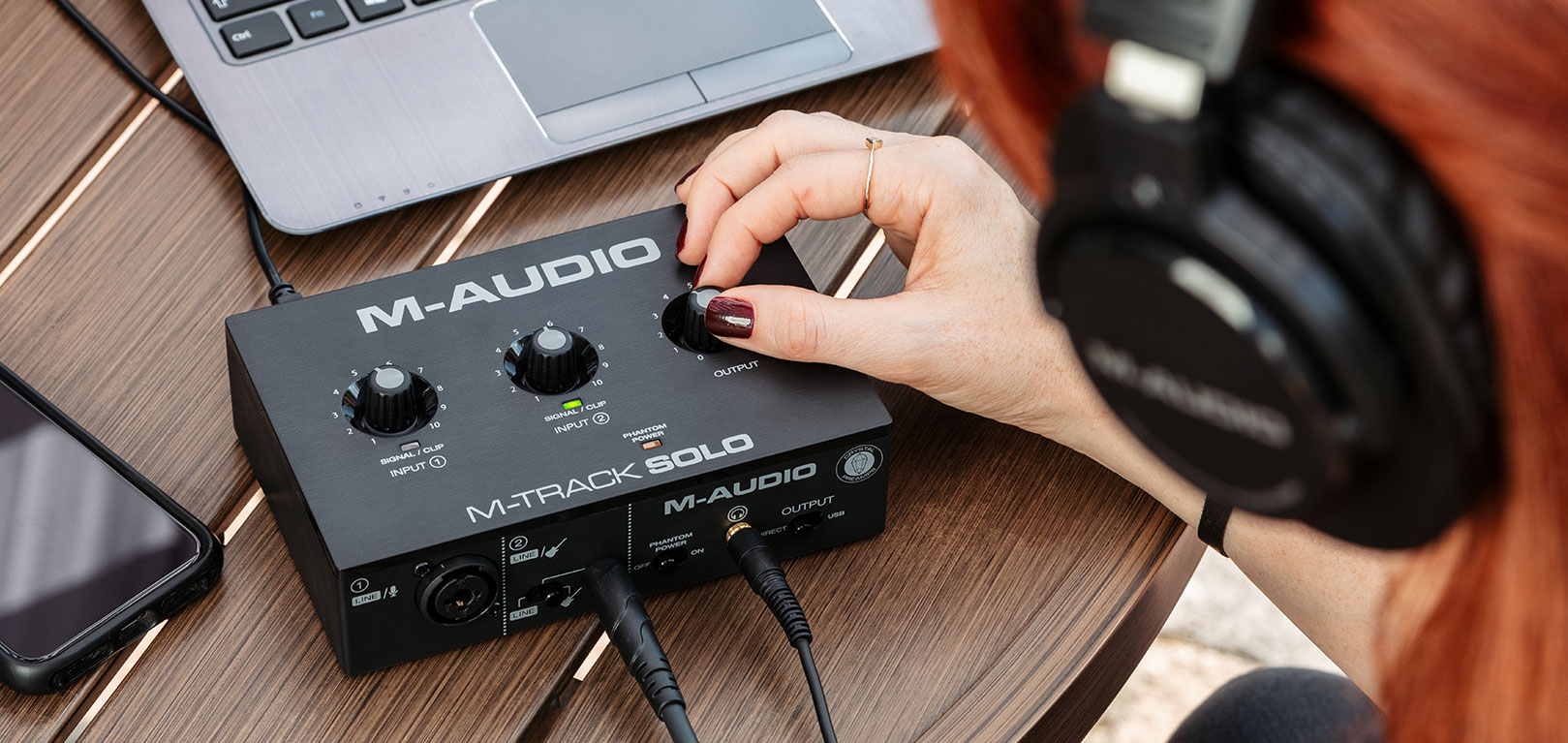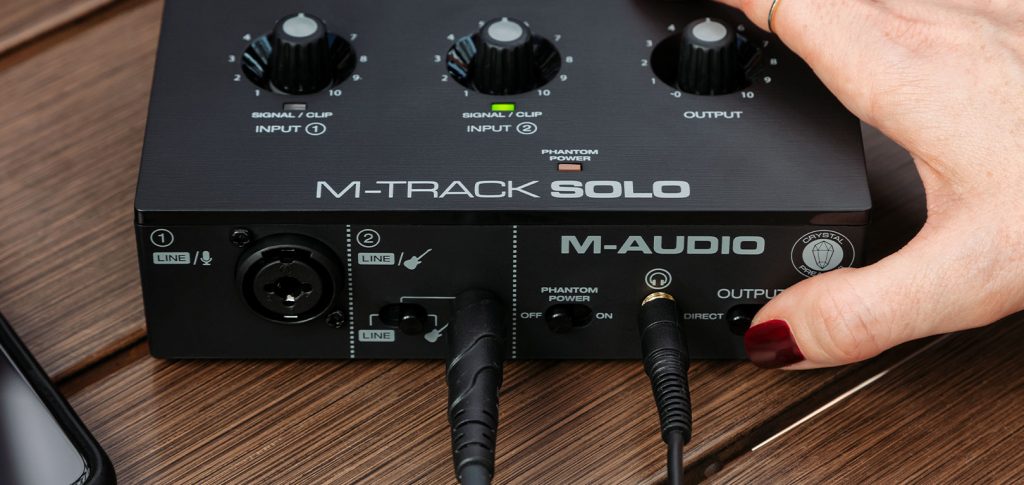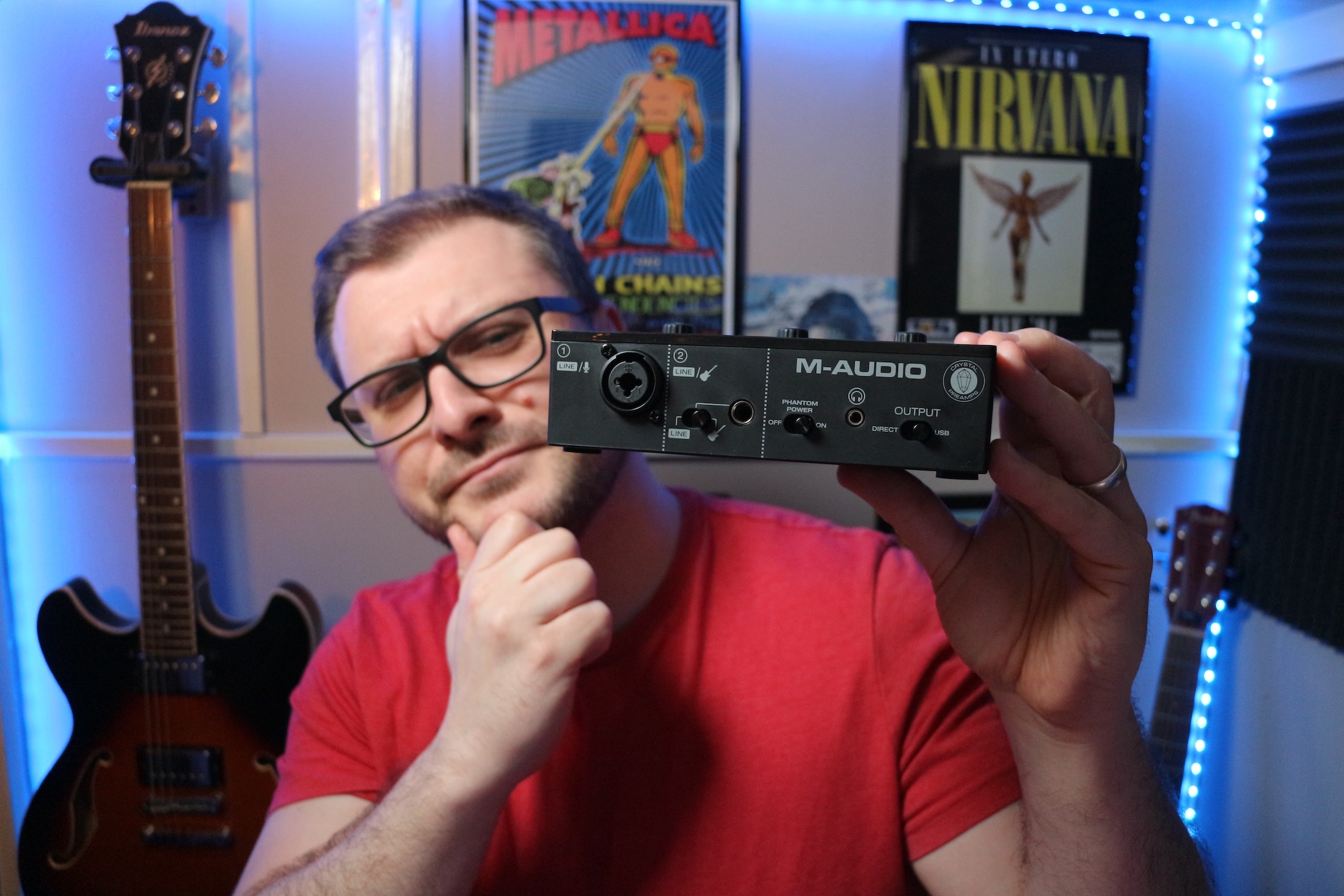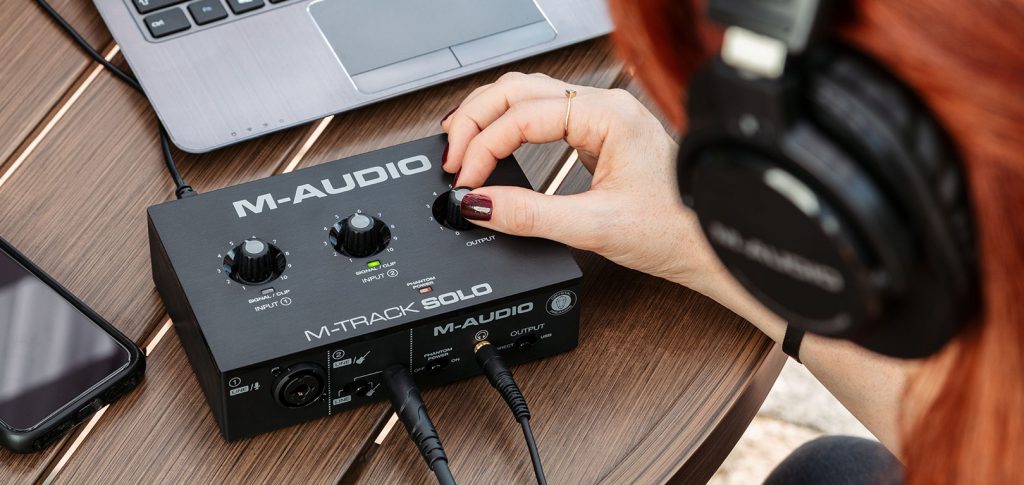
In their bid to muscle in on the super budget interface market, M-Audio have come out swinging!
The M-Track Solo (and slightly more expensive M-track Duo) takes aim squarely at companies (and their inferior, shoddy products) who have spent several years providing a sub-standard experience to those looking to get into the home recording game on a tight budget.
Punching well above its weight in the sound quality department, the M-track Solo does an admirable job of providing beginners and intermediate users alike usable, great sounding audio via its Diamond preamps.
Not only that, it might just be the new go-to audio interface for beginners looking to get started in the world of home recording on a budget.
Dive into my full M-Audio M-Track Solo Review video below:
“I’m genuinely surprised by how good the M-track solo sounds.”
What’s in the Box?
Inside the M-Track Solo’s packaging, you’ll find the interface itself, a USB B to USB A cable, some documentation … and that’s it!
The interface has a fully plastic construction. That’s not really surprising at this price point. The mix of matte and gloss finishes makes the M-track Solo look more premium than it feels.

On the front of the interface is a XLR and 1/4” TRS cable combo input. Next to that is 1/4” input with a toggle switch to select between line level stuff like for microphones or keyboards or guitars/basses.
Next, there’s a Phantom power switch, which is mercifully situated on the FRONT of the interface. I hate when companies stick it on the back so this is great to see.
There’s a 3.5mm headphone jack here, which I have mixed feelings about. I think i’d rather have a 1/4” headphone input if i’m honest.
And at the end here a toggle switch which allows you to switch between hearing the direct signal input or the USB stream return signal. Set it to Direct and you’ll hear the direct input signal with all inputs summed to mono. Set it to USB and you’ll hear the audio playback from whatever machine you have it hooked up to whether thats a Mac or an iPad.
“I also didn’t notice any latency when recording, either on my Mac where I did the majority of testing, or on my iPad Pro.”
On the top of the M-Track Solo you’ll find gain controls for both inputs. A super useful feature is the clip lights that light up green when an input signal is detected, and turn red if your signal is too hot and you’re clipping. An unexpected but welcome feature at this price point. There’s a Phantom power LED that lights up when phantom power is engaged and an output control for the headphone or RCA outs here too.
On the back of the interface are old school RCA outputs to connect to monitors and there’s a USB port here too.
Built to last?
Overall the build quality is pretty good considering it’s made of plastic.
The combo input and jack inputs are both solid, with minimal movement or wobbliness when something is plugged in.
The switches all feel solid too, though The gain knobs on the top of the interface are a wee bit on the shoogly side…
I’m genuinely surprised by how good the M-track solo sounds.
I usually have to wrestle with abnormally loud noise floors in cheaper interfaces with lower quality preamps. The Crystal preamps in the M-Track Solo perform very well indeed. They give out a good, strong signal. So much so in fact that I am able to plug in and use my Rode Procaster, a dynamic microphone that is notorious for requiring a LOT of gain.
I also didn’t notice any latency when recording, either on My Mac where I did the majority of testing, or on my iPad pro.
The M-track pro is plug and play with any iPad with a USB-C port, you’ll need a USB to USBC adapter though.
For lightning based devices you will need to use a camera connection kit and connect it to the mains to use the phantom power feature though.
“Punching well above its weight in the sound quality department, the M-track Solo does an admirable job of providing beginners and intermediate users alike usable, great sounding audio…”
I genuinely believe you will not find a better audio interface at this price point. It has everything beginners need to get set up and recording great sounding audio and is small enough that mobile musicians can slip it into a backpack and take it anywhere.
It’s not perfect (those wobbly knobs may be of concern) and I did find that turning the gain up from 9 to 10 resulted in a larger than expected jump in input gain, but you know what, I can forgive that.
Because now I will no longer have to ever again even entertain the thought of recommending Behringer’s dreadful UM2 to anyone.


